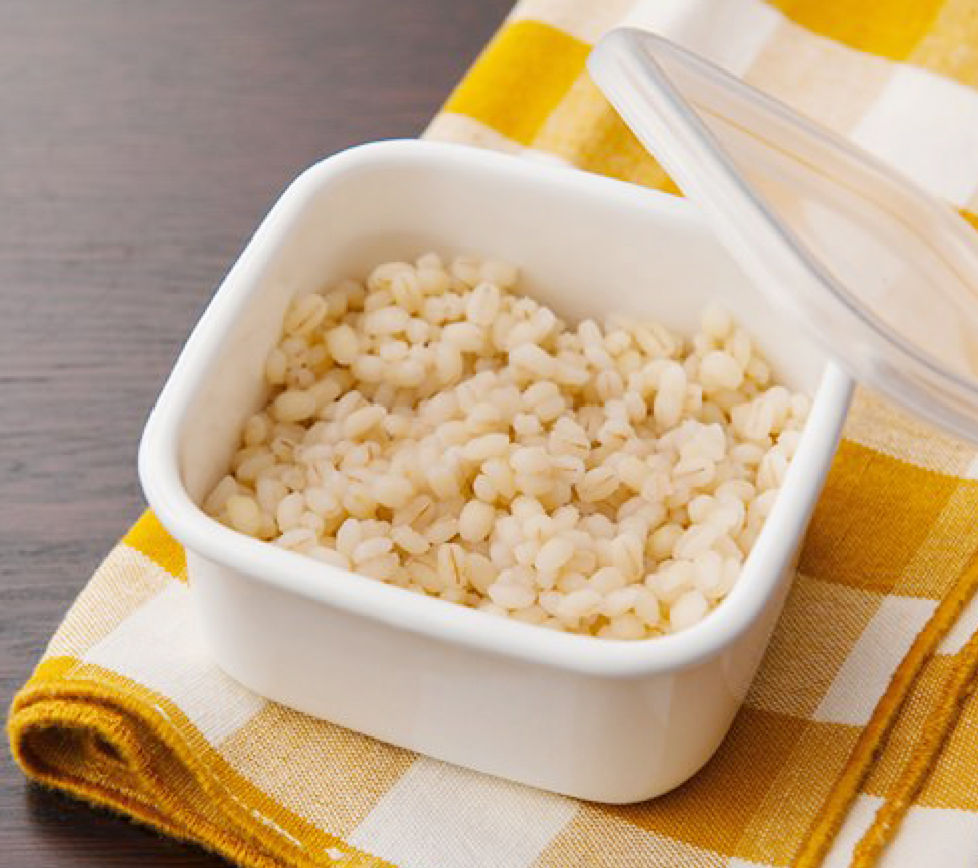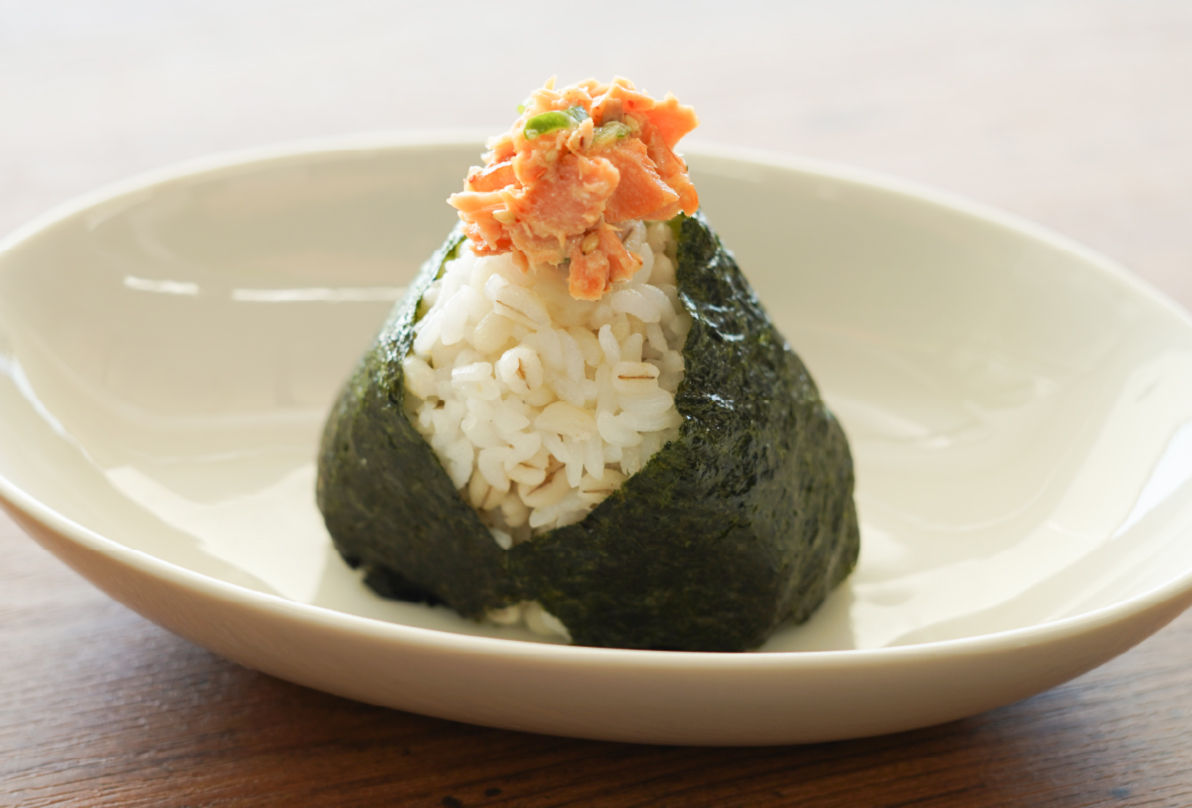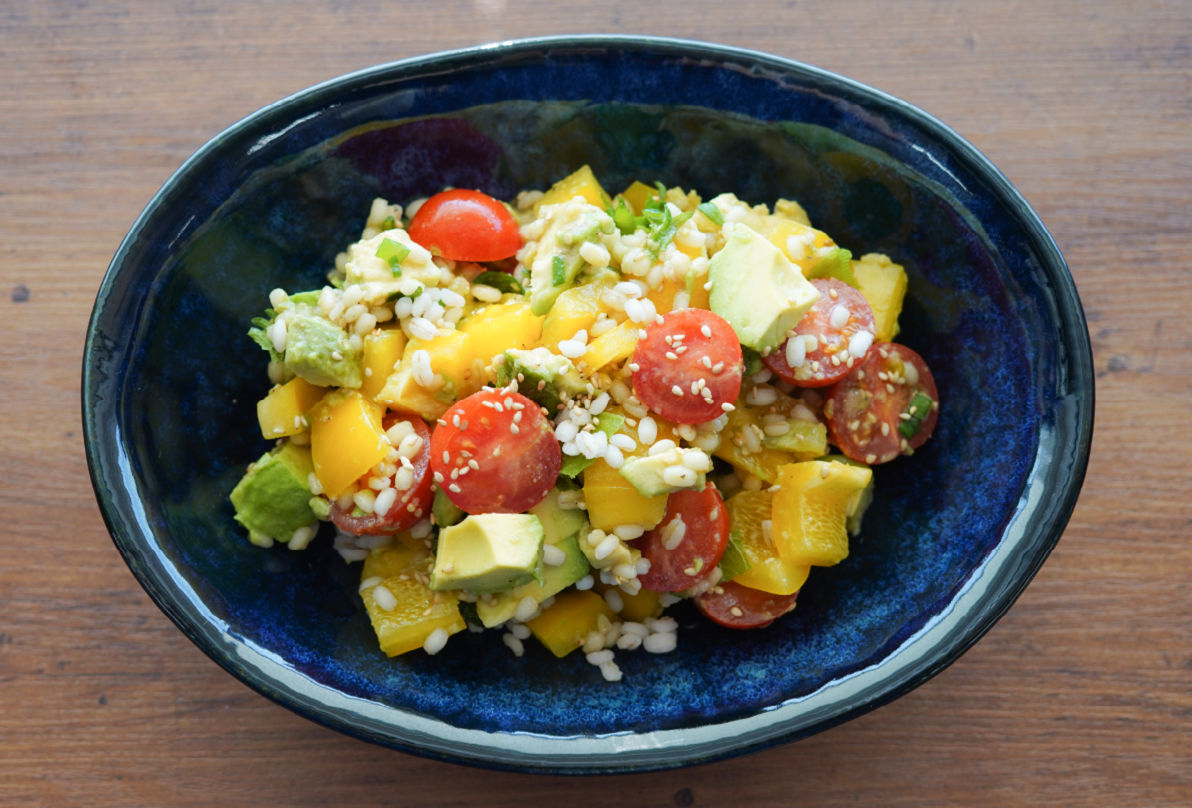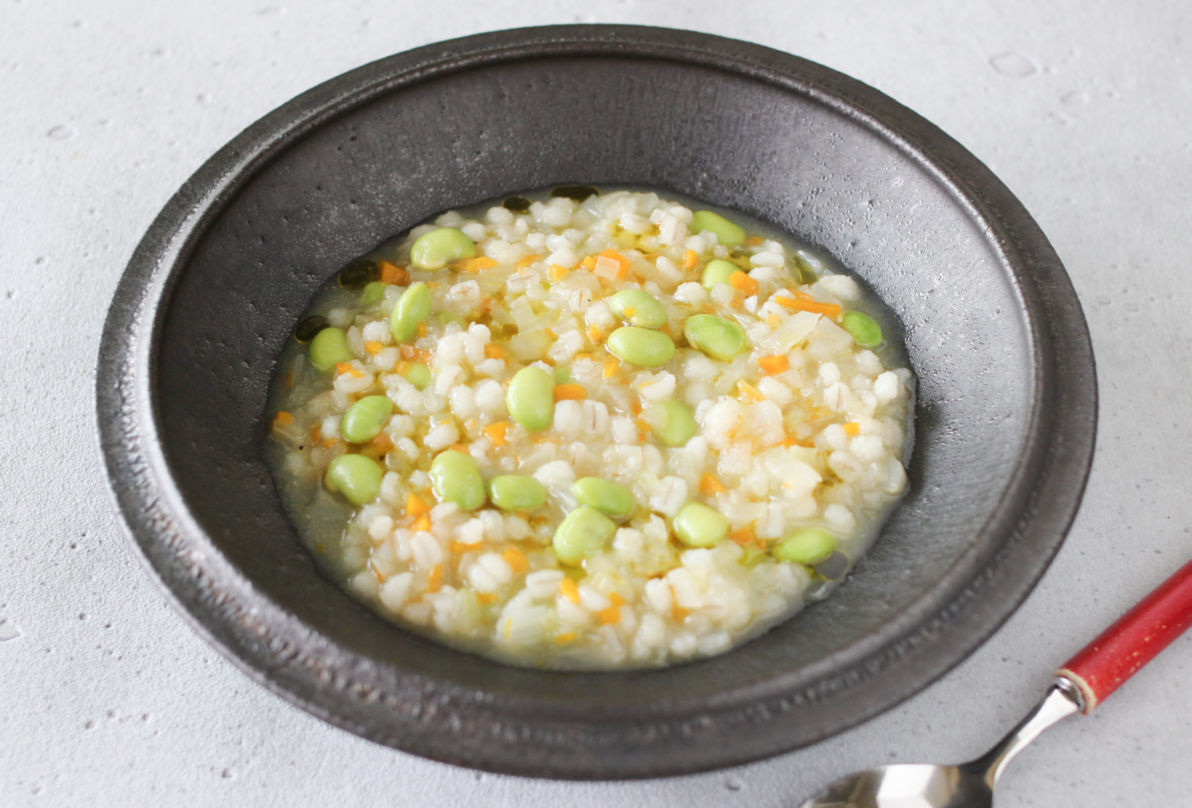Barley, Easily Embracing
a Fiber-Rich Lifestyle
A Brief Introduction to Barley
If you continue to eat barley, you will experience a variety of health benefits, including constipation relief, weight loss, and prevention of lifestyle-related diseases. Barley contains a good balance of two types of dietary fiber, insoluble and soluble, and the secret of its power is β-glucan, a water-soluble dietary fiber. Its functional labeling has been approved in many countries around the world for its ability to suppress increases in postprandial blood glucose levels, lower cholesterol levels, and promote defecation.
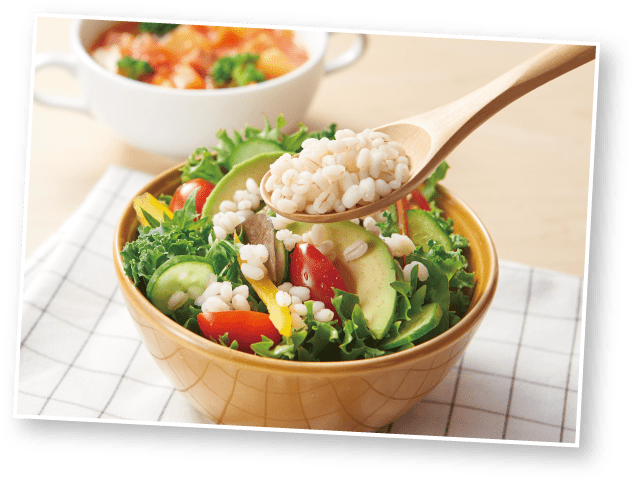
Barley Benefits and Functional Labeling Approved Countries
| Functional Labeling Approval Details | Approved Countries |
|---|---|
| Maintaining healthy bowel function | Japan, Korea |
| Promotion of defecation | Europe |
| Suppression of postprandial blood glucose level | Japan, Europe |
| Reduction of blood cholesterol levels | Japan, Europe, Australia |
| Reduction of risk of heart disease | USA, Canada, Europe |
Characteristics and Historical
Background of Barley
Barley, an ancient grain consumed worldwide, comes in various types and is utilized in diverse ways. Unlike wheat, barley contains no gluten but is rich in starch, making it suitable for rice and wheat for bread. It is commonly used in beer and barley tea. There are two main types of barley: non-waxy and waxy, each with distinct characteristics. Waxy barley, called Mochimugi in Japan is high in dietary fiber and has a sticky texture, while non-waxy barley, like oshimugi, is light and used in dishes like mugi toro gohan (rice with barley grated yam) in Japan.
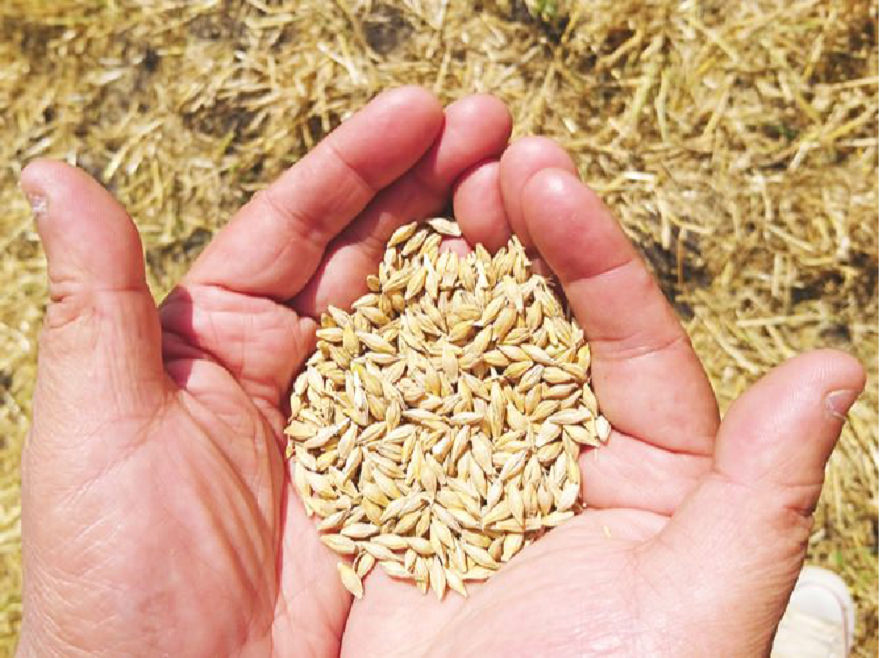
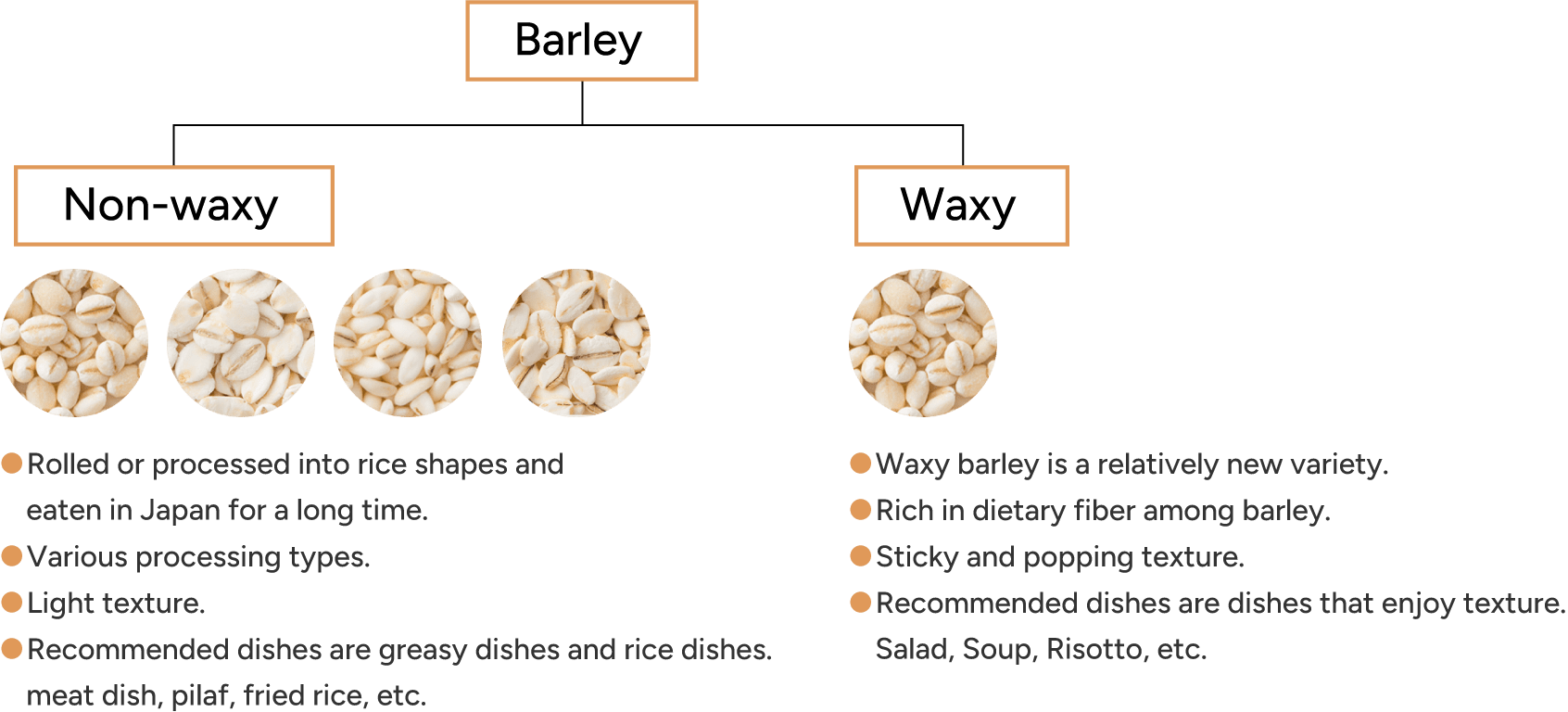
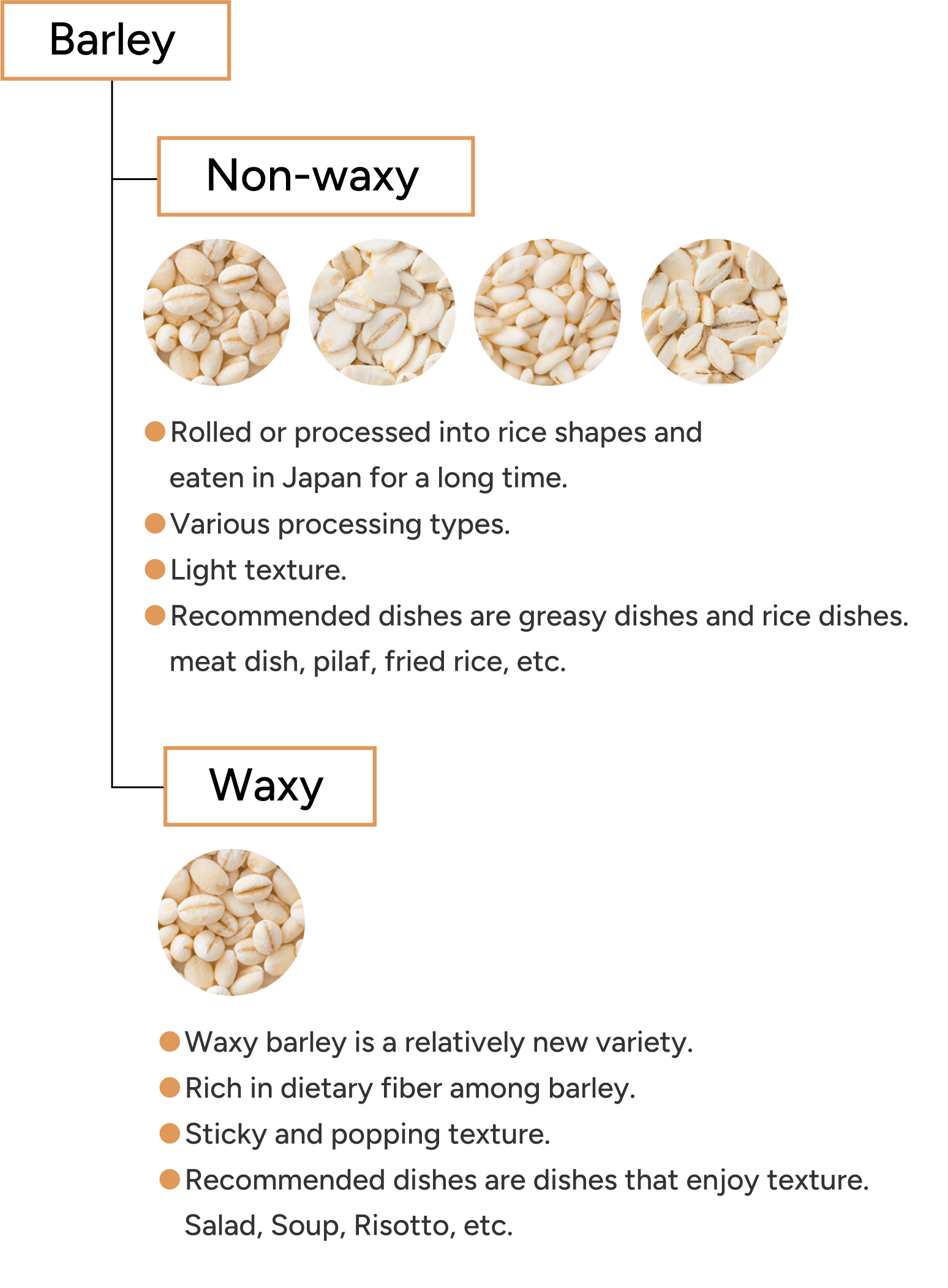
Health Benefits of Barley
Gut Health with Barley
Barley promotes regular bowel movements by softening stools and increasing bulk.
Barley contains a balanced mix of insoluble and soluble dietary fibers. Insoluble fiber adds bulk to stools and enhances the peristaltic movement of the intestines. Additionally, water-soluble fibers in barley, such as “β-glucan,” act as nourishment for intestinal bacteria, fostering a balanced gut environment and improving intestinal motility. Scientific studies support the claim that consuming barley leads to increased stool volume and effectively alleviates constipation.
(Source: “Nutrition” Volume 19 (2003), Issue 11-12, Pages 926-929, Effects of barley intake on glucose tolerance, lipid metabolism, and bowel function in women.)
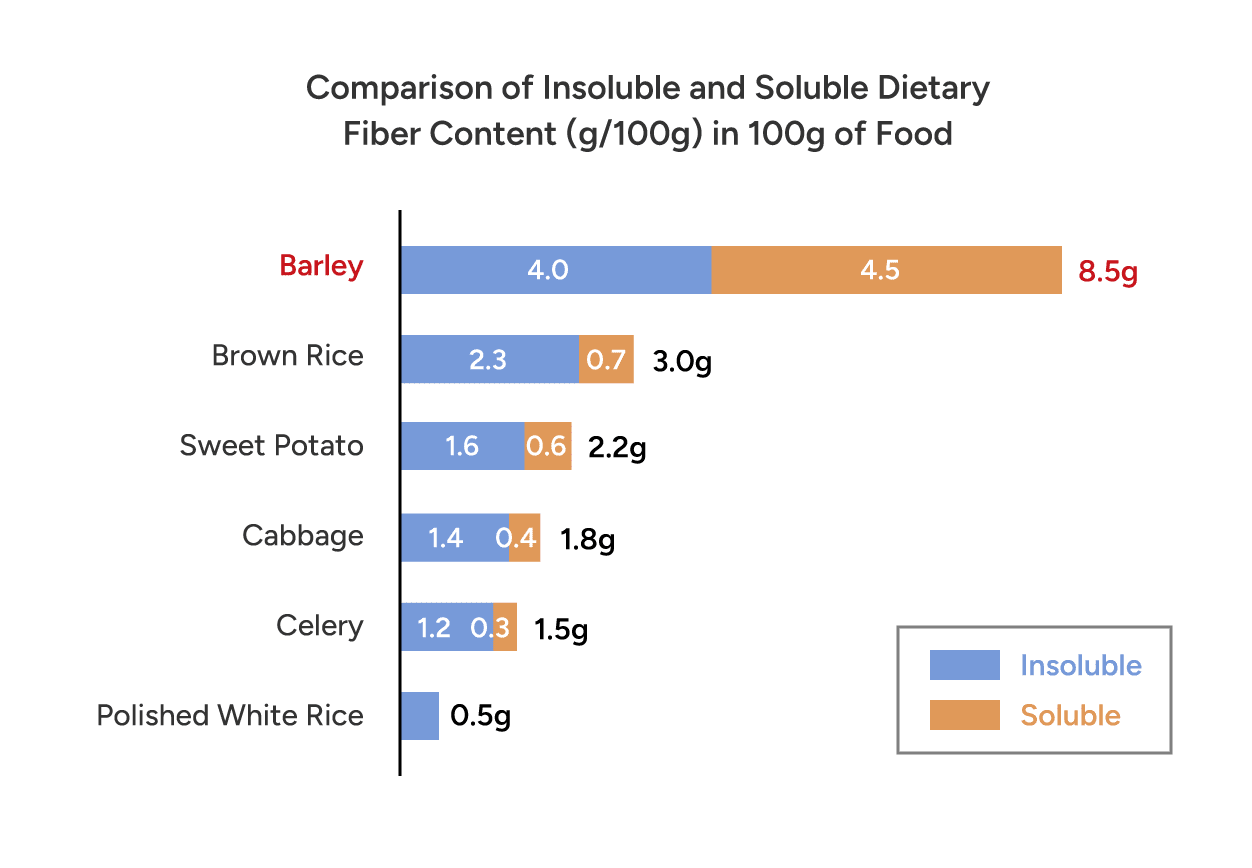 (Data sources: Japanese Standard Tables of Food Composition 2015 (Seventh Revised Edition) for all except barley. Barley: Data from Hakubaku)
(Data sources: Japanese Standard Tables of Food Composition 2015 (Seventh Revised Edition) for all except barley. Barley: Data from Hakubaku)


Effective Prevention of Metabolic Syndrome
Barley’s ability to regulate blood sugar levels effectively helps prevent diabetes. Additionally, β-glucan, a water-soluble dietary fiber, in barley impedes fat absorption in the intestines, aiding in the prevention of lipid irregularities and arterial hardening.
Soluble fiber is food for the bacteria in your large intestine, such as “lactic acid bacteria” and “Bifidobacterium”. When lactic acid bacteria and Bifidobacterium increase, the influence of gut flora that produces toxins and gas weakens and diminishes, therefore improving the condition of your digestive system.
Soluble fiber surrounds sugars and fats, hampering them from being broken down in the small intestine by digestive enzymes. Sugars and fats cannot be absorbed unless they are broken down, which means that the amount of sugars and fats absorbed is reduced. In this way soluble fiber helps regulate blood sugar and cholesterol.
(Source: “Anaerobe”(2019) Volume 55, p.67-77, Alterations in gut microbiota composition and metabolic parameters after dietary intervention with barley beta glucans in patients with high risk for metabolic syndrome development)
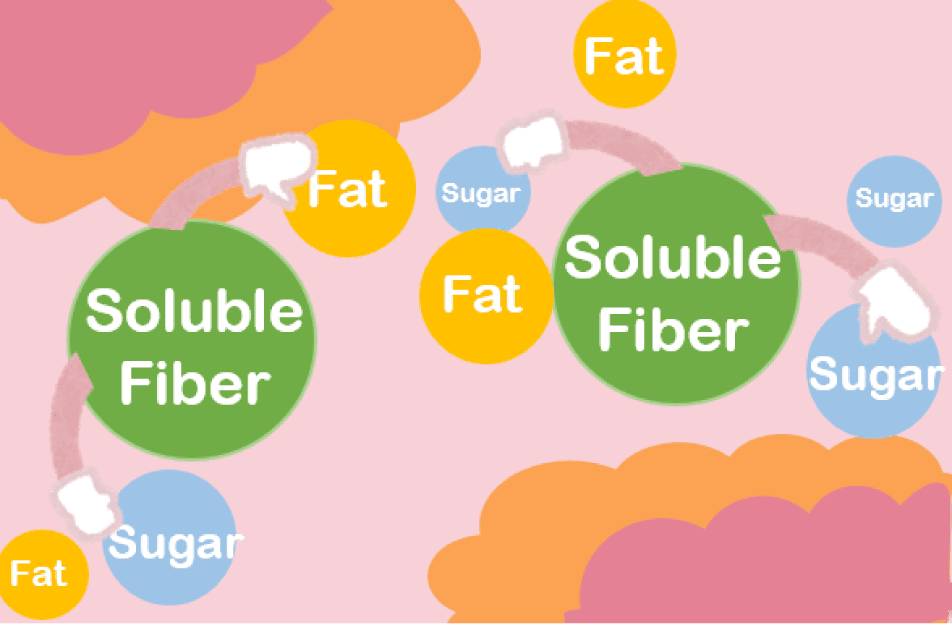
Lowering Bad Cholesterol (LDL)
Barley’s β-glucan lowers cholesterol by binding to cholesterol and bile acids in the small intestine, inhibiting their absorption and facilitating elimination from the body. The chart illustrates cholesterol levels in groups consuming barley rice (50%) versus white rice continuously for 12 weeks. The findings demonstrate a notable reduction in total cholesterol and LDL-cholesterol levels among the barley rice group.

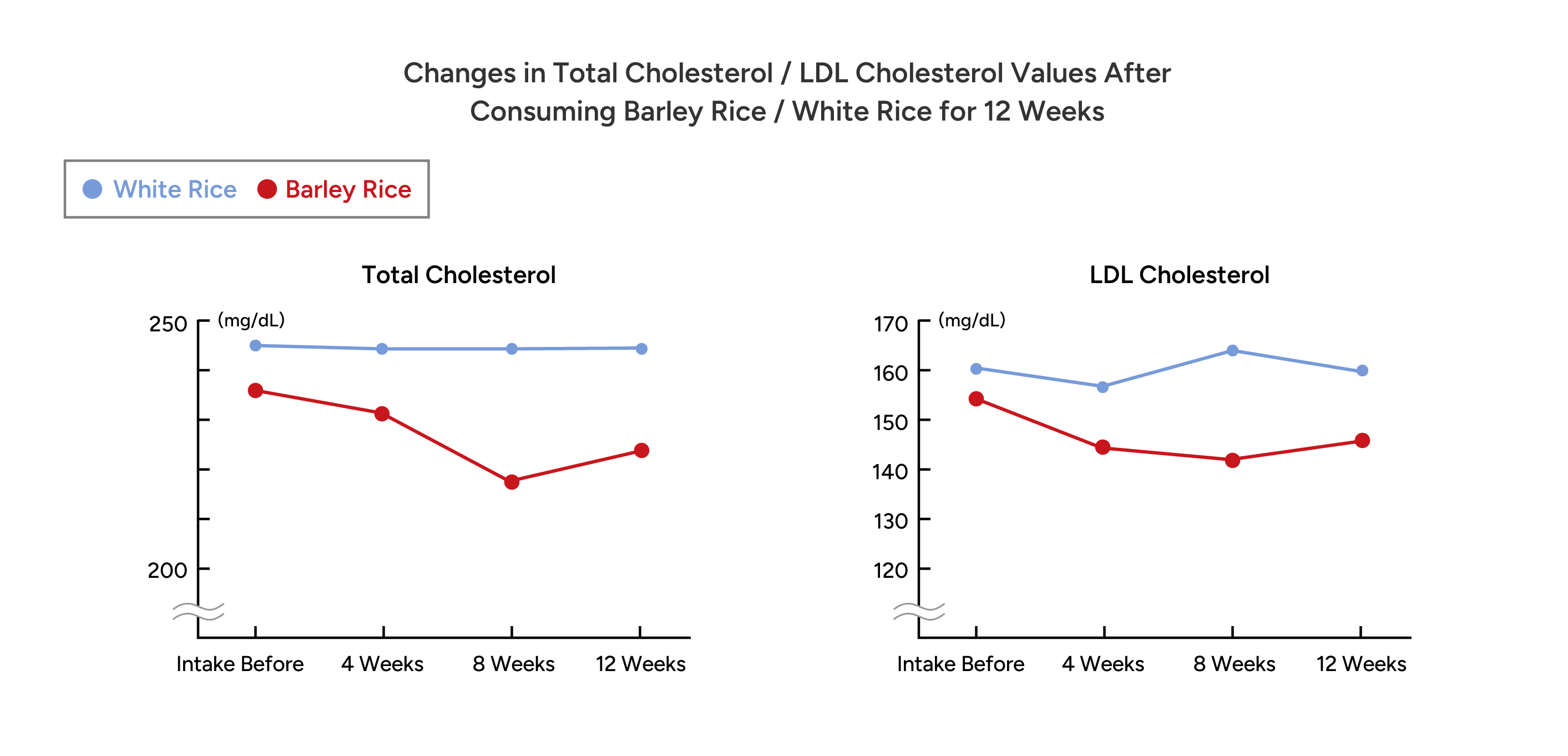
 *44 Men with Hypercholesterolemia and BMI 22 or Higher (Source: Plant Foods Hum Nutr;63,1,21-25,2008)
*44 Men with Hypercholesterolemia and BMI 22 or Higher (Source: Plant Foods Hum Nutr;63,1,21-25,2008)
Recipe
Cooking Raw Barley Boiling Method
Boiling barley in plenty of water, much like pasta, makes it perfect for dishes like soups and salads. It’s convenient to cook a batch at once as you can use it in various ways.
Ingredients ( Yields approximately 300g )
- A pot with at least 1L of water
- Barley (hulled barley, pressed barley, etc.) 100g (Measuring cup: about 2/3 for hulled barley, about 4/5 for pressed barley)
Steps for Boiled Barley
- Bring water to a boil in a pot and add the barley.
- Reduce heat to a simmer, stirring occasionally, and boil for 15-20 minutes.
- Once it reaches your desired firmness, strain it and rinse off excess starch under running water.
- Drain well and transfer to a container.

Spicy Salmon Mayo Onigiri
( Cooking time : 10 min ) Excluding rice cooking time.
Ingredients ( For 4 serving )
- 150g rice
- 50g Mochimugi (Waxy) barley
- 320ml water for cooking rice
- 4 nori seaweed sheets
- 100g salmon
- 2 tablespoons mayonnaise
- 1 teaspoon chopped green onions
- 1/2 teaspoon shichimi
- (Japanese seven-spice blend)
Method
- Wash 150g of rice and 50g of mochimugi barley, drain the water, and cook with 320ml of water.
- Wrap the salmon in aluminum foil and grill it in a frying pan for 4 minutes on each side.
- Remove the skin and bones from the grilled salmon, mix with 2 tablespoons of mayonnaise, 1/2 teaspoon of shichimi, and chopped green onions.
- Place a handful of rice on plastic wrap, add the filling, and then add more rice.
- Wrap the onigiri with nori, and top it with the grilled salmon. It’s done!

Barley Garden Delight Salad
( Cooking time : 25 min )
Ingredients ( For 4 serving )
- 1/2 paprika
- 10 cherry tomatoes
- 1 and 1/2 avocados
- 50g Dry Mochimugi (Waxy) barley, or 150g boiled barley
- 5 large shiso leaves
- Dressing Ingredients
- 1 tablespoon olive oil
- 1 clove of garlic (finely chopped)
- 1 tablespoon soy sauce
- 3 tablespoons rice vinegar
- 1 tablespoon lemon juice
- Salt and pepper to taste
Method
- Boil the mochimugi barley in boiling water for 20 minutes and drain it. If you have already boiled barley, use that.
- Cut all vegetables into 2cm cubes.
- Mix the dressing ingredients well and combine with the vegetables and mochimugi barley to complete the salad.

Mochimugi and Edamame Risotto-style
( Cooking time : 20 min )
Ingredients ( For 4 serving )
- 75g Edamame beans
- 1/2 Onion
- 1/3 Carrot
- 10cm Celery stalk
- 60g Cooked Mochimugi (Waxy) barley
- 1 tablespoon Olive oil
- 1/2 teaspoon Salt
- Salt, pepper
Method
- Finely chop the onion, carrot, and celery. Place a pot over medium-low heat, add olive oil, and sauté the vegetables slowly.
- Once the vegetables become soft and sweet, add the cooked mochi barley and 500ml of water (not listed in the ingredients).
- Add salt and bring to a boil, then reduce the heat and simmer for 10 minutes. Add the edamame and simmer for an additional 5 minutes. If there’s too much liquid, increase the heat and simmer until thickened.
- Adjust the seasoning with salt and pepper.
Serve in bowls and drizzle with olive oil (not listed in the ingredients).
Please contact us.
Please feel free to contact us at the
e-mail address below to request a quote or other information.
Our representative will reply to you within a few days.
We look forward to hearing from you about your OEM needs.
contact@hakubaku.com

